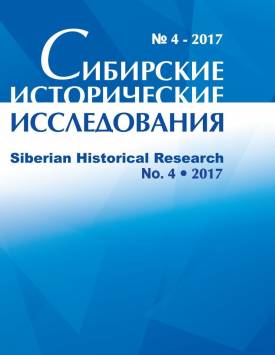Practices of purification and mediation in Russian geobotany
In this article, the solution to one of the most fundamental issues in the science of vegetation (geobotany) - that of the nature of vegetation cover - is reviewed from the perspective of actor-network theory (ANT). In the case of theoreticians of geobotany, who historians of this science divide into followers of the ideas of either continuity or discreteness vegetation, debates were held as to the objective foundations of the discipline and ended up with a victory of the continuity paradigm. From the ANT perspective, these debates and their outcome can be interpreted as work aimed at purification of natural sciences from the traces of social metaphors that contributed to the formation of objects of research interest in geobotany. This has raised the question of mediation which makes plant communities' naturalness possible. The ethnographic study of fieldwork and laboratory practices - carried out with regard to geobotanic research on the vegetation in the Ob's floodplain and the Vostochny peninsula -has shown that pragmatic considerations underlie geobotany experts' actions during data gathering: they only make a small number of descriptions of 'pure' plant communities where there is limited species composition present. In the laboratory, the collected data is again purified from those descriptions made at the intersection of different 'pure' communities of plants. The purified data then undergoes cluster analysis for the purposes of classifying these plant communities found in a given vegetation area. Visualisation of the results produced allows the researchers see intersections between different classes of the plant communities, and that forms the basis for the vegetation continuity perspective. Thus, laboratory devices help the geobotany experts construct the vegetation's natural continuity, while clearing it from the fieldwork's pragmatic routine. The article raises a number of questions with regard to Russian geobotany as a nature-culture: how does vegetation construct the researchers; how does further socialisation of the plant communities develop beyond the laboratory; and what exactly happens in the matching of a plant community as an actor-network which other objects.
Keywords
исследования науки и технологий, акторно-сетевая теория, антропология науки, конструирование объектов, медиация, геоботаника, science and technology studies, actor-network theory, anthropology of science, construction of objects, mediation, geobotanyAuthors
| Name | Organization | |
| Voronkov Aleksey V. | Moscow Higher School of Social and Economic Sciences | alexeyvoronkov62@gmail.com |
| Solovyova Anna A. | European University at Saint Petersburg | anaa_sol@mail.ru |
References

Practices of purification and mediation in Russian geobotany | Sibirskie Istoricheskie Issledovaniia – Siberian Historical Research. 2017. № 4. DOI: 10.17223/2312461X/18/9
